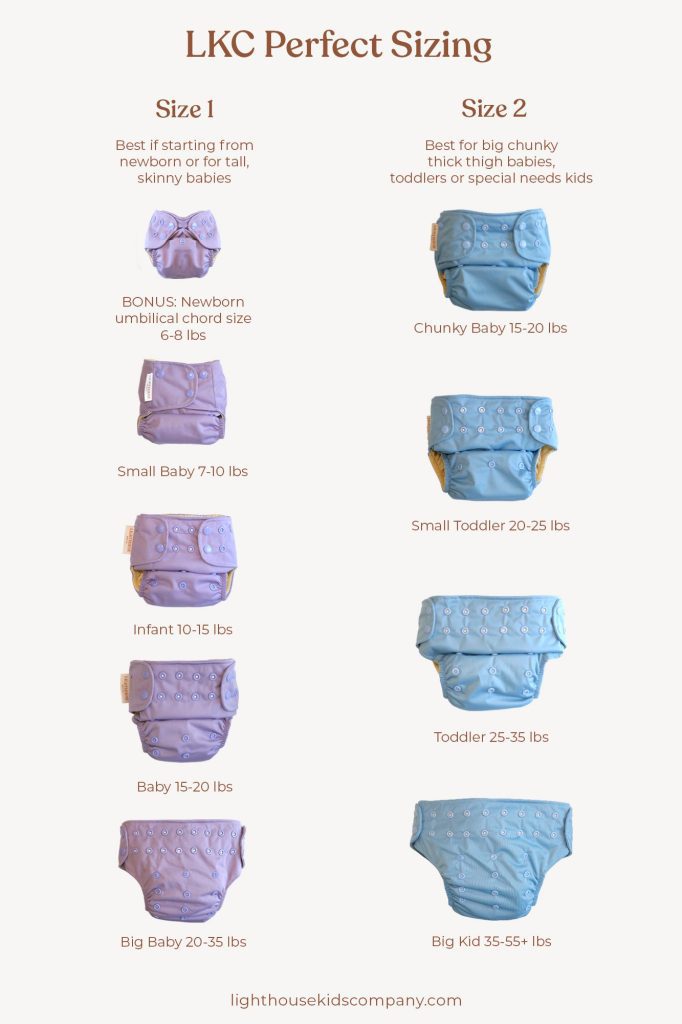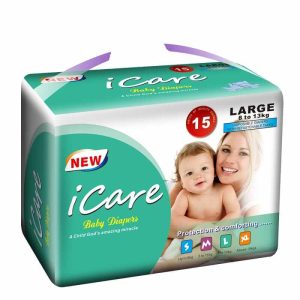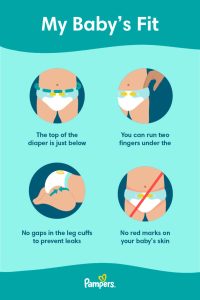Best way to use cloth diapers: pre-wash them before first use and change them frequently to prevent rashes. Cloth diapers offer a sustainable and cost-effective solution for parents.
They require minimal preparation before use and provide comfort for the baby. Pre-washing is essential to remove any residues from manufacturing. Frequent changes keep your baby dry and comfortable, reducing the risk of diaper rash. With various styles available, such as all-in-ones or prefolds, parents can choose the type that best suits their needs.
Cloth diapers are also eco-friendly, reducing the waste generated by disposable options. Proper care, including regular washing and drying, ensures longevity and hygiene. Investing in cloth diapers can lead to long-term savings while benefiting the environment and your baby’s health.
Choosing The Right Cloth Diapers
Choosing the right cloth diapers can seem overwhelming. There are many options available, and each has its own benefits and drawbacks. Below, we break down the different types of cloth diapers and the factors to consider when making your choice.
Types Of Cloth Diapers
There are several types of cloth diapers. Knowing the types helps in making the best choice for your baby.
- Prefolds: These are rectangular pieces of cloth folded to fit your baby. They need a waterproof cover.
- Fitted: These diapers have elastic at the legs and waist. They also need a cover.
- Pocket Diapers: They have a pocket for stuffing absorbent material. The outer layer is waterproof.
- All-in-Ones (AIO): These diapers have absorbent layers sewn in. They are as easy to use as disposables.
- All-in-Twos (AI2): These have a detachable insert. The cover can be reused if not soiled.
Factors To Consider
Consider these factors to choose the right cloth diaper for your baby.
| Factor | Details |
|---|---|
| Absorbency | Choose a diaper with high absorbency to prevent leaks. |
| Comfort | Ensure the diaper is soft and comfortable for your baby. |
| Cost | Consider your budget. Some types are more affordable. |
| Ease of Use | Some diapers are easier to put on and take off. |
| Drying Time | Check how long the diaper takes to dry after washing. |
Choosing the right cloth diapers doesn’t have to be hard. By understanding the types and considering key factors, you can find the best option for your baby and your lifestyle.

Credit: lighthousekidscompany.com
Preparing Cloth Diapers For Use
Cloth diapers are eco-friendly and cost-effective. Proper preparation ensures they work well and last long. Follow these simple steps to get your cloth diapers ready for your baby.
Pre-washing Tips
Before using cloth diapers, pre-wash them. This step removes any manufacturing residues. New cloth diapers should be washed at least once before use. Repeat washing for natural fibers like cotton and hemp. They need multiple washes to reach full absorbency.
- Use warm water for pre-washing.
- Avoid fabric softeners. They reduce absorbency.
- Separate dark and light-colored diapers to prevent color bleeding.
Detergents To Avoid
Choosing the right detergent is crucial. Some detergents can harm the diapers and your baby’s skin. Avoid detergents with bleach or fabric softeners. These can break down the fabric and irritate the skin.
| Type of Detergent | Reason to Avoid |
|---|---|
| Bleach | Weakens fabric fibers |
| Fabric Softeners | Reduces absorbency |
| Enzymes | Causes rashes on sensitive skin |
| Fragrances | Can irritate baby’s skin |
Opt for mild detergents without additives. Look for detergents specifically designed for cloth diapers. These detergents protect the fabric and ensure no harmful residues remain.
Diapering Techniques
Using cloth diapers can be both environmentally friendly and cost-effective. To get the most out of your cloth diapers, it’s essential to know the right diapering techniques. This includes understanding how to fold and secure the diapers properly. Let’s dive into these techniques to make your cloth diapering experience a breeze.
Folding Methods
There are several folding methods for cloth diapers. Each method provides a unique fit and level of absorbency. Here are three popular folding techniques:
- Pad Fold: This method is simple and quick. Fold the diaper into a pad shape and place it inside a diaper cover.
- Origami Fold: This method offers better absorbency. Fold the diaper into a triangle, then fold it again to create a pad.
- Jelly Roll Fold: This method is great for preventing leaks. Roll the diaper edges inwards, then fold it into a pad.
Using the right folding method can make a big difference in comfort and effectiveness. Always choose the fold that best suits your baby’s needs.
Securing Diapers
Once you’ve folded the diaper, the next step is securing it. There are various ways to secure cloth diapers:
- Snappi Fasteners: These are modern fasteners that grip the fabric. They are easy to use and adjust.
- Diaper Pins: Traditional and reliable, diaper pins hold the diaper in place securely. Always use safety pins designed for diapers to avoid accidents.
- Velcro or Snap Covers: Some diaper covers come with built-in Velcro or snaps. These are convenient and provide a snug fit.
Choosing the right securing method ensures the diaper stays in place. It also helps to prevent leaks and keeps your baby comfortable.

Credit: dirtydiaperlaundry.com
Dealing With Diaper Rash
Diaper rash can be uncomfortable for your baby. It can cause redness, irritation, and discomfort. Understanding how to prevent and treat diaper rash is crucial. This section will guide you through effective strategies.
Prevention Strategies
Preventing diaper rash is better than treating it. Follow these strategies to keep your baby’s skin healthy.
- Change diapers frequently: Wet or soiled diapers can irritate the skin. Change them every 2-3 hours.
- Use breathable diaper covers: Cloth diapers with breathable covers reduce moisture buildup.
- Keep skin dry: Pat your baby’s skin dry after cleaning. Avoid rubbing.
- Allow diaper-free time: Let your baby go without a diaper for a few minutes daily. It helps the skin breathe.
Safe Rash Creams
Sometimes, diaper rash happens despite your best efforts. Using safe rash creams can help soothe and heal the skin.
| Cream | Ingredients | Benefits |
|---|---|---|
| Zinc Oxide Cream | Zinc Oxide | Creates a barrier and heals irritated skin. |
| Aloe Vera Gel | Aloe Vera | Soothes and moisturizes the skin naturally. |
| Coconut Oil | Pure Coconut Oil | Has antimicrobial properties and provides moisture. |
Always choose creams free of harsh chemicals. Natural options are often safer for sensitive baby skin.
Washing Cloth Diapers
Washing cloth diapers can seem tricky at first. With the right steps, it’s easy. Here’s a guide to help you keep those diapers clean and fresh.
Washing Routine
Follow a simple washing routine to keep cloth diapers clean:
- Remove solids: Shake off any solids into the toilet.
- Pre-rinse: Rinse the diapers in cold water.
- Main wash: Use hot water and a good detergent.
- Extra rinse: Rinse again to remove any detergent residue.
Use a mild detergent that is free from additives. Avoid fabric softeners as they can affect absorbency.
Drying Tips
Proper drying is crucial for cloth diapers. Here are some tips:
- Line dry: Sunlight helps to naturally bleach and disinfect diapers.
- Tumble dry: Use a low setting if you need to use a dryer.
- Avoid high heat: High heat can damage the waterproof layer.
Sun drying is the best option. It keeps diapers fresh and bright.
:max_bytes(150000):strip_icc()/Best-Cloth-Diapers-PAR-tout-c9aa5e8c6e5244b784aa827ee1ea5324.jpg)
Credit: www.parents.com
Storing Dirty Diapers
Storing dirty cloth diapers properly is crucial. You want to prevent odor and stains. There are two main methods: wet pail and dry pail. Each method has its benefits. Let’s explore these methods.
Wet Pail Vs Dry Pail
The wet pail method involves soaking dirty diapers in water. Some parents add a few drops of essential oils for a fresh scent. This method helps prevent stains. However, wet pails can be heavy and spill easily.
The dry pail method uses a dry container or bag. Line the pail with a washable liner. Simply toss the dirty diapers in. Dry pails are easier to handle. They also reduce the risk of spills. Both methods have their pros and cons. Choose the one that fits your lifestyle best.
Odor Management
Managing odor is essential for storing dirty diapers. Here are some tips:
- Use a pail with a tight-fitting lid.
- Add a few drops of tea tree oil for a fresh scent.
- Wash diapers every 2-3 days to prevent strong odors.
- Rinse diapers before storing to reduce smell.
| Method | Pros | Cons |
|---|---|---|
| Wet Pail | Prevents stains, can add oils | Heavy, risk of spills |
| Dry Pail | Easy to handle, less risk | May have more odor |
Traveling With Cloth Diapers
Traveling with cloth diapers may seem challenging, but it can be easy. With the right preparation and mindset, cloth diapering on the go becomes manageable. This section will guide you through the essentials and tips for a smooth journey.
Packing Essentials
Preparing for a trip with cloth diapers requires a few key items.
- Cloth Diapers: Bring enough for at least two days.
- Wet Bags: Pack two wet bags for dirty diapers.
- Diaper Liners: Use liners for easy cleaning.
- Wipes: Pack reusable or disposable wipes.
- Diaper Cream: Ensure it’s cloth diaper safe.
- Travel-sized Detergent: For washing diapers on the go.
On-the-go Tips
Use these tips to make cloth diapering while traveling a breeze.
- Plan Ahead: Know where you can wash diapers.
- Use Flats: They dry faster and take up less space.
- Stay Organized: Keep clean and dirty diapers separate.
- Be Flexible: Sometimes you might need to use disposables.
- Ask for Help: Don’t hesitate to seek assistance if needed.
Traveling with cloth diapers doesn’t have to be stressful. With the right preparation and these helpful tips, you can maintain your cloth diaper routine while enjoying your travels.
Common Challenges And Solutions
Using cloth diapers can be a rewarding experience. However, parents often face some common challenges. Addressing these effectively can make cloth diapering a breeze. Here are some common issues and their practical solutions.
Leak Issues
Leaking is a frequent problem with cloth diapers. Here are some tips to prevent it:
- Proper Fit: Ensure the diaper fits snugly around the waist and legs.
- Absorbency: Use the correct inserts for your baby’s needs. Adjust absorbency levels as required.
- Change Regularly: Change the diaper every 2-3 hours to avoid leaks.
- Check Elastics: Ensure elastics are not worn out. Replace if necessary.
Stains And Build-up
Stains and build-up can make cloth diapers less effective. Here’s how to tackle this issue:
- Pre-Rinse: Rinse diapers in cold water before washing.
- Use Proper Detergent: Choose a detergent free of additives and fragrances.
- Hot Wash: Wash diapers in hot water to remove bacteria and stains.
- Sun-Dry: Drying in the sun can naturally bleach out stains.
- Strip Diapers: Occasionally strip diapers to remove build-up. This can be done by washing with a small amount of bleach or using a specific stripping agent.
By addressing these common challenges, you can make cloth diapering an easier and more effective choice for your baby.
Frequently Asked Questions
What Are The Benefits Of Cloth Diapers?
Cloth diapers are eco-friendly and cost-effective. They reduce waste and save money over time. They also avoid harmful chemicals found in disposables.
How Do You Wash Cloth Diapers?
Remove any solids and rinse. Wash in a hot water cycle with a gentle detergent. Dry thoroughly before reuse.
How Many Cloth Diapers Do I Need?
Newborns may need 20-24 cloth diapers. Older babies usually require 12-18. This depends on how often you wash.
Can Cloth Diapers Cause Diaper Rash?
Cloth diapers can cause less diaper rash than disposables. They are breathable and free from harsh chemicals.
Conclusion
Using cloth diapers can be simple and eco-friendly. Follow the tips in this guide to maximize their benefits. You’ll not only save money but also reduce waste. Enjoy the process and contribute to a healthier planet. Start your cloth diaper journey today and see the positive impact.




